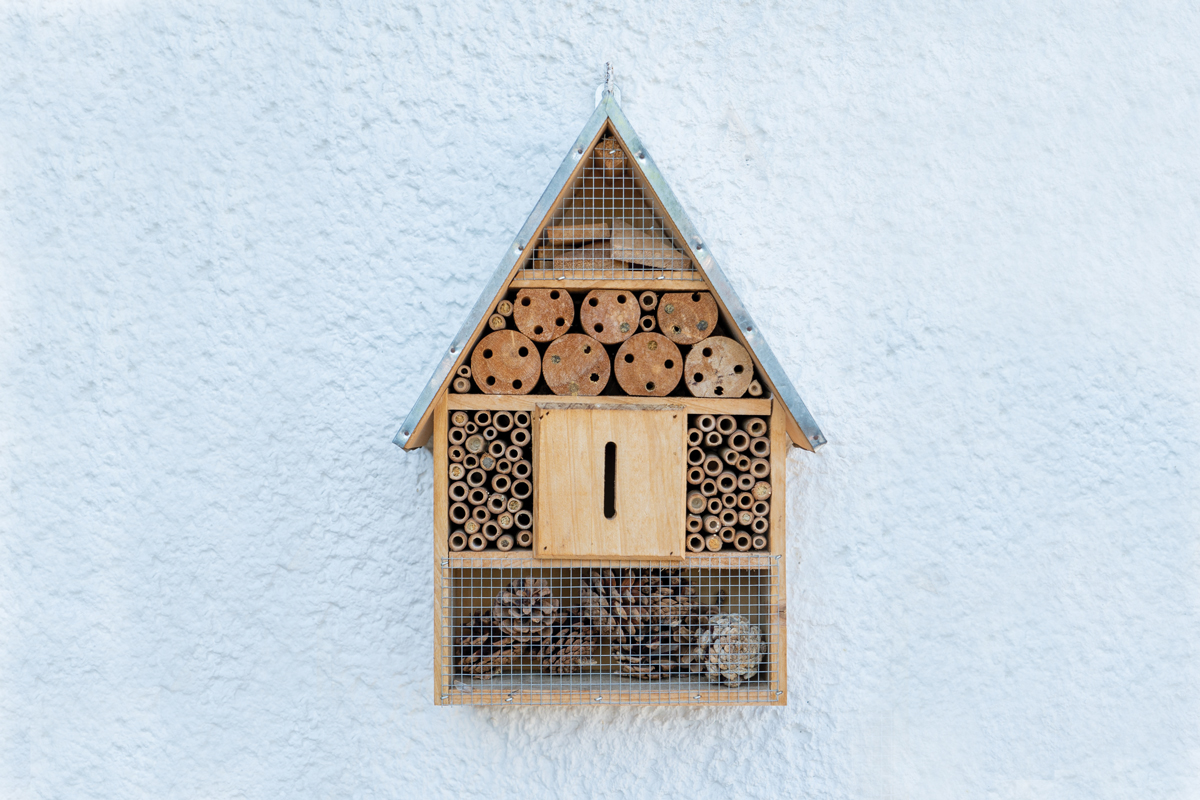Build For The Bees

- Written by
- Dyani Van Basten Batenburg
Bees across the globe are under threat– much of their natural habitat has been lost across the past six decades, including over 90% of wildflower meadows. And, pesticides, intensive farming and climate change are constantly keeping them on the move. So, by building a bee-friendly home in your garden, you’re helping them bloom!
You’ll need…
- Nesting materials such as hollow plant stems, bunches of dried twigs, grasses, lengths of bamboo cane. Aim for a range of diameters from 2mm to 10mm – and ensure they are all dry
- A small wooden box (think shoe box size, untreated timber is best) or use a two-litre used plastic bottle (or length of water pipe)
- Sandpaper
- Craft knife and cutting mat
- Strong twine, about 1m long
- Garden clippers or secateurs
- Modelling clay (optional)
How to…
Step 1: If using a plastic bottle, cut both ends to create a cylinder, if using a length or water pipe or a small wooden box, sand all the edges till smooth.
Step 2: Then measure the length of your cylinder or depth of your box – aim for roughly 15 to 20cm in length.
Step 3: Cut and trim your dry sticks, twigs and bamboo 3cm shorter than your measurement. Why? Because the stems and canes need to stay dry inside their case otherwise the bees wont burrow down deep inside them.
Step 4: Just remember if using hollow bamboo canes, bees can’t burrow through the knots in bamboo, so avoid canes with too many knots.
Step 5: Use your sandpaper to smooth the ends of the bamboo or stems if they are rough and uneven because bees don’t like sharp edges at the entrance to holes. And, wooden splinters on sticks could also cut their wings.
Step 6: Then using your modelling clay block the back of the sticks, stems and bamboo canes, and using your twine tightly bind them altogether into one, two or three small bunches.
Step 7: If using a plastic cylinder, thread a length of twine through it so you can hang up the finished bee house. If making a bee house box, you could secure it to tree, fence or nail the bottom of it to a post.
Step 8: Finally, pack your twiggy bunches tightly into your cylinder or box, and you are ready to start bee hosting!